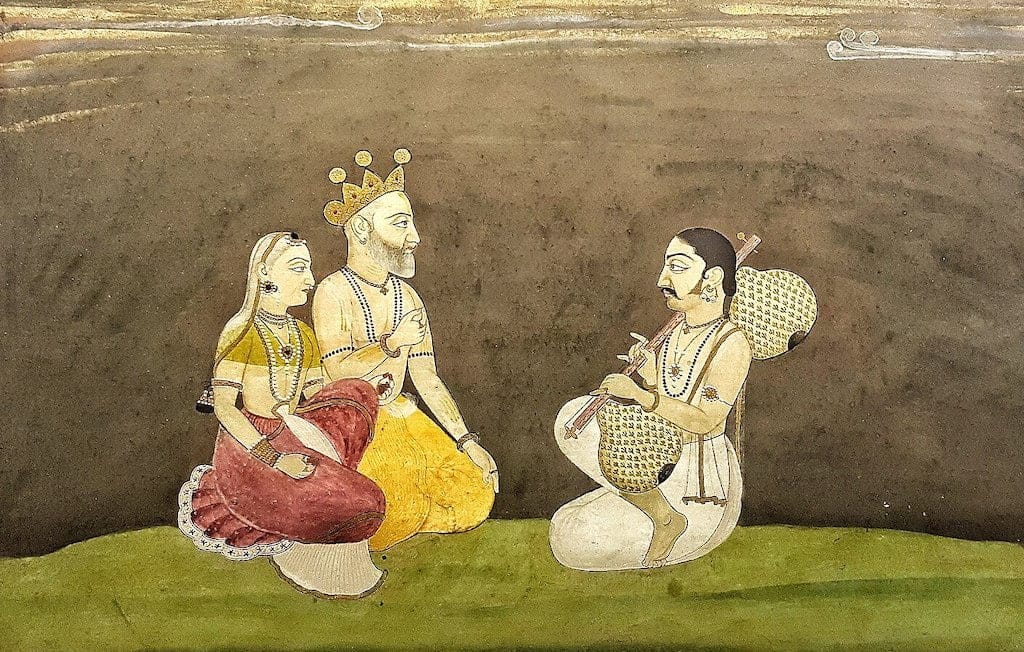Unraveling the Legacy of Jayadeva

Jayadeva, also spelled Jaideva, remains a luminary figure in Sanskrit literature, flourishing during the 12th century. His indelible mark lies in the celebrated epic poem, the ‘Gita Govinda,’ a magnum opus that intricately weaves the tale of Krishna’s impassioned love for the gopi, Radha, against the backdrop of spring. This legendary creation, advocating Radha’s supremacy over Krishna, stands as a cornerstone text in the Bhakti movement within Hinduism.
An Enigmatic Poet’s Life
Details about Jayadeva’s life remain shrouded in mystery, veiled by the passage of time. He is recognized as a solitary poet and a Hindu ascetic, revered for his poetic brilliance in the eastern regions of India. Born into a Brahmin family, although some suggest he belonged to the Baidya community, Jayadeva’s precise birth date and location are subjects of uncertainty and scholarly debate, fueling the Jayadeva birth controversy.
The village of “Kindubilva,” as referenced in the Gitagovinda, has sparked varied identifications among scholars across Odisha, Bengal, and Mithila. From Kenduli Sasan near Puri in Odisha to Jaydev Kenduli in Birbhum district, West Bengal, and Kenduli near Jhanjharpur in Mithila, different regions claim to be his birthplace. References from sixteenth-century texts assert Jayadeva’s origin from ‘Utkala,’ an alternate name for Odisha. Notably, Odisha houses a significant number of Gita Govinda manuscripts, showcasing its deep-rooted presence in the region’s cultural fabric.
Legend has it that Jayadeva, a wandering soul, likely visited Puri, where tradition purports his marriage to a dancer named Padmavati. However, this claim lacks substantial support from early commentators or modern scholarship. His parents, Bhojadeva and Ramadevi, are mentioned in temple inscriptions, shedding light on his educational journey in Sanskrit poetry at Kurmapataka, a site now identified near Konark in Odisha.
Historical Insights into Jayadeva’s Life
Inscriptions at revered temples like Lingaraja, Madhukeswara, and Simhachala have offered glimpses into Jayadeva’s early life. These inscriptions narrate his tenure as part of the teaching faculty at Kurmapataka, possibly where he received his education as well. The Gitagovinda, composed by Jayadeva, gained swift recognition in Puri, as evidenced by an early commentary written in Odisha around 1190.
The village of Kenduli Sasana emerges as a repository of Vaishnava ruins and temples, resonating with Krishna-centric imagery, even preceding its popularity in Bengal or other parts of India. The Jagannatha temple in Puri continues the tradition of ritually singing the Gita Govinda during the Badasinghara ritual, a practice established in Jayadeva’s era. Maharis or devadasis were instructed to faithfully render the Gitagovinda, aligning it with the ragas of Odissi music.
Odisha boasts a rich tradition of composing the Gita Govinda in diverse forms, from manuscripts designed like fish to garlands made of small round palm leaf pieces, reflecting unparalleled craftsmanship. The Odisha State Museum preserves a significant collection, including meticulously illustrated manuscripts, a testament to the enduring artistic legacy of Jayadeva’s work.
Literary Contributions
Jayadeva’s poetic contributions extend beyond the Gita Govinda, with published archaic Odia poems chronicling the Radha-Krishna romance. Revered as an early luminary in Odissi music, Jayadeva’s compositions, including those in archaic Odia, continue to echo every night during the Badasinghara ritual at the Jagannatha temple, retaining authenticity in their rendition.
His hymns find a place of honor in the Guru Granth Sahib, the sacred text of Sikhism, offering a unique blend of Sanskrit and eastern Apabhramsha. Records suggest that Jayadeva’s profound work left an indelible mark on Guru Nanak during his visit to Puri, emphasizing the enduring impact of the poet’s creations.
Jayadeva, shrouded in historical mysteries, stands as an enigmatic figure whose literary brilliance and artistic legacy continue to reverberate through the ages, etching his name among the luminaries of Indian literature and spirituality.





